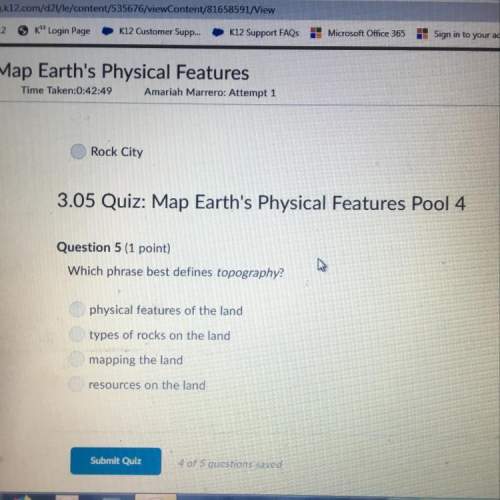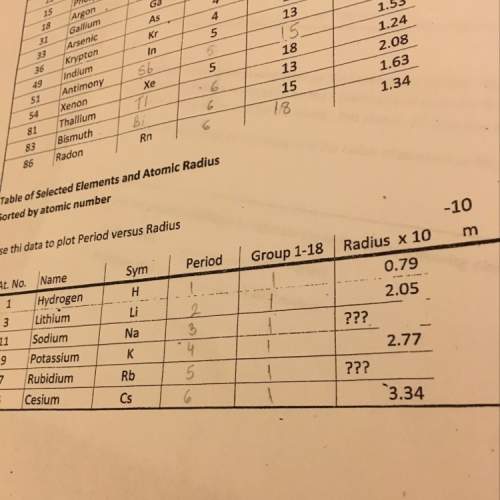
Chemistry, 02.12.2020 19:30, NickWinston8712
. Consider the following half-reactions:
Ag+(aq) + e– → Ag(s) E = +0.80 V
Cu2+(aq) + 2 e– → Cu(s) E = +0.34 V
Pb2+(aq) + 2 e– → Pb(s) E = –0.13 V
Fe2+(aq) + 2 e– → Fe(s) E = –0.44 V
Al3+(aq) + 3 e– → Al(s) E = –1.66 V
Which of the above metals or metal ions will reduce Pb2+(aq)?
a. Ag+(aq) and Cu2+(aq)
b. Ag(s) and Cu(s)
c. Fe2+(aq) and Al3+(aq)
d. Fe(s) and Al(s)
e. Cu2+(aq) and Fe2+(aq)

Answers: 1
Other questions on the subject: Chemistry


Chemistry, 22.06.2019 12:40, valenzueladomipay09u
How does concentration affect reaction rate
Answers: 2

Chemistry, 22.06.2019 17:00, Estrella2209
Which property of a rock remains unchanged by mechanical weathering? a. total surface area b. size and shape c. mineral composition d. sharpness
Answers: 1

Chemistry, 22.06.2019 17:30, destineysarah
98 points you will be galileo perform the experiment to determine if objects with different mass fall at the same, or different, rates in the air and in a vacuum. before you conduct your experiment, you need to form a hypothesis. a hypothesis is a prediction of what you think will happen in the experiment. the hypothesis is a statement that describes “if” a certain set of circumstances are present “then” there will be a specific result that will occur. record your hypothesis here: record the results from step one of the experiment (dropping the objects in the air): first trial: second trial: third trial: record the results from step two of the experiment (dropping the objects in a vacuum): first trial: second trial: third trial: did the experiment support your hypothesis? using the data from your experiment, describe why you believe your hypothesis was either proven or disproven. what forces were acting on the objects dropped in the air? what force was acting on the objects dropped in the vacuum? part two: comparing forces choose two forces and compare and contrast these forces. you must provide two ways that they are alike and two ways that they are different. you may make a list, write in paragraph form, or make a chart. choose two forces and compare and contrast these forces. these must be different forces than used in the prior question. provide two ways that they are similar and two ways that they are different. you may make a list, write it out, or make a chart.
Answers: 3
Do you know the correct answer?
. Consider the following half-reactions:
Ag+(aq) + e– → Ag(s) E = +0.80 V
Cu2+(aq) + 2 e– →...
Cu2+(aq) + 2 e– →...
Questions in other subjects:






Arts, 30.08.2019 21:30

English, 30.08.2019 21:30



Computers and Technology, 30.08.2019 21:30








